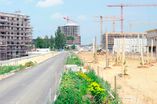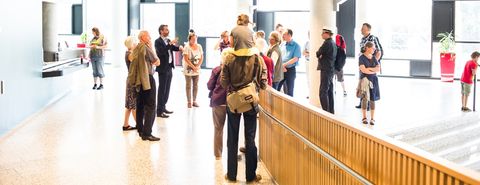The spectrum of the IBA
For more than one hundred years, the letters 'IBA' have stood for 'Internationale Bauausstellung', international building exhibition. This is actually a misleading title. A building exhibition is much more than a mere exhibition. It is an instrument of visionary urban development. Visitors do not only see buildings. At an IBA, people are researching and developing live, just like in a lab, within a given time frame. Only that this lab is an entire area of the city. In case of the IBA Hamburg, this have been the Elbe islands between 'HafenCity' and 'Harburg'.
The research assignment was: Developing the city of tomorrow. Where and how do we live, work, study and where will we be in 20 years' time? How will the cities face the impact of climate change? It has taken seven years of researching and developing in Hamburg, from the IBA opening year to the interim presentation in 2010 until the current presentation in 2013.
Every IBA exhibition carried out so far has been significant and forward-looking, offering a lot of inspiration and innovation. The first building exhibitions were presentations of modern architecture, but their aim was not only to present new architecture but also a new life style. Today's building exhibitions are kind of 'workshops' which can cover several years. Apart from the presentation of new architecture, the focus is now on social, economical and cultural matters. The IBA Hamburg has been concentrating on the vital questions concerning metropolitan development such as the living together of different cultures or reasonable and healthy ways for a city to grow. Continuing the tradition of the former building exhibitions, model houses for future building construction were of course also shown.
There is one thing that all building exhibitions up to now have in common: Far beyond the scope and the immediate exhibition area, they have all given impetus to future urban life. Officially, the IBA Hamburg ends in 2013, but the initiated process of urban development is going on. Some of the projects are still being realised and have to be completed. And action groups such as the Education Drive or the ‘Renewable Wilhelmsburg’ Climate Protection Concept are continuing their work.
The history of building exhibitions
Building exhibitions have been held in Germany since 1901. So they represent a treasure trove of more than a hundred years’ experience when it comes to finding innovative solutions for the most pressing problems of urban community life. Many ideas still live on today. And each show was an inspiration to innovators.
The history of building exhibitions starts shortly after the dawn of the 20th century on Darmstadt’s Mathildenhöhe. By 1901 industrialization had led to an unprecedented surge in mass produced housing and overcrowded living space. The architect’s “art” seemed to have no place in the city. The first IBA rebelled against this state of affairs, creating an independent settlement and artists’ colony. In 1927 it was followed by the Weißenhofsiedlung in Stuttgart. Here the Deutsche Werkbund (design & industry federation) realized its vision of a new kind of dwelling. The building exhibition Weißenhofsiedlung showed the latest developments in architecture and house construction as if under a burning glass.
After the Second World War two competing concepts of progressive building emerged in the two halves of the divided nation; both sought to move beyond the disastrous tradition of the barrack-like apartment blocks built in the 19th century Gründerzeit. In the early 1950s the (east) German Democratic Republic realized its vision of “Residential palaces for workers” with monumental buildings on Stalinallee. Not to be outdone, the western part of Berlin staged its Interbau exhibition of 1957 and rebuilt the war-ravaged Hansa district as a loosely structured cityscape with high-rises and low buildings. The Berlin IBA in 1987 was a reaction to the construction “sins” committed in the 1960s and 1970s, offering models for the repair and reconstruction of urban spaces. The planners aimed for a sensitive treatment of the old and new buildings still standing in Berlin’s historic city centre.
The IBA Emscher Park started in 1989 and its ten years were dedicated to the post-industrial, often abandoned cityscapes of the Ruhr area; for the first time an exhibition focussed on an entire region with numerous towns and administrative districts. Models were developed here for economic and environment-friendly conversion work in the Ruhr district. Since 1999 a similar theme has been occupying the planners of IBA Fürst-Pückler-Land, site of disused lignite mines in Niederlausitz district: here too the issues are environmental rehabilitation, artistic transformation and putting the region to new, contemporary use. These days, solutions also need to be found for “shrinking towns”, which economic and demographic changes are threatening to hollow out. That is the subject matter of IBA Stadtumbau (running until 2010), which is the first exhibition to take an entire state in the German Federation – Saxony-Anhalt – as its location.
All building exhibitions to date have had this in common: they generated ideas on shaping the future of urban life, survival even, that had an impact far beyond their immediate location and remit.
Previous building exhibitions:

1901 Mathildenhöhe

1927 Stuttgart

1952 Stalinallee

1957 Interbau

1987 Berlin

1999 Emscher Park

2010 Niederlausitz

2010 Stadtumbau

IBA Hamburg 2013
Current building exhibitions:

IBA Basel 2020
IBA Parkstad Limburg 2020

IBA Heidelberg 2022
IBA Thüringen 2023

















